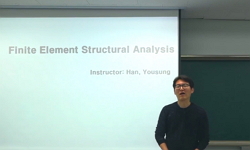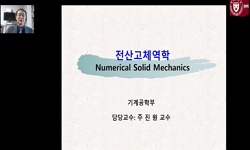Objectives: To analyze the influence of thickness and incisal extension of indirect veneers on the stress and strain generated in maxillary canine teeth. Materials and Methods: A 3-dimensional maxillary canine model was validated with an in vitro str...
http://chineseinput.net/에서 pinyin(병음)방식으로 중국어를 변환할 수 있습니다.
변환된 중국어를 복사하여 사용하시면 됩니다.
- 中文 을 입력하시려면 zhongwen을 입력하시고 space를누르시면됩니다.
- 北京 을 입력하시려면 beijing을 입력하시고 space를 누르시면 됩니다.

Influence of thickness and incisal extension of indirect veneers on the biomechanical behavior of maxillary canine teeth
한글로보기https://www.riss.kr/link?id=A105935387
-
저자
Victória Luswarghi Souza Costa (Department of Dental Materials and Prosthodontics, São Paulo State University (UNESP), Institute of) ; João Paulo Mendes Tribst (Department of Dental Materials and Prosthodontics, São Paulo State University (UNESP), Institute of) ; Eduardo Shigueyuki Uemura (Department of Dental Materials and Prosthodontics, São Paulo State University (UNESP), Institute of) ; Dayana Campanelli de Morais (Department of Dental Materials and Prosthodontics, São Paulo State University (UNESP), Institute of) ; Alexandre Luiz Souto Borges (Department of Dental Materials and Prosthodontics, São Paulo State University (UNESP), Institute of)

- 발행기관
- 학술지명
- 권호사항
-
발행연도
2018
-
작성언어
English
- 주제어
-
등재정보
KCI등재
-
자료형태
학술저널
- 발행기관 URL
-
수록면
1-13(13쪽)
-
KCI 피인용횟수
1
- DOI식별코드
- 제공처
-
0
상세조회 -
0
다운로드
부가정보
다국어 초록 (Multilingual Abstract)
Objectives: To analyze the influence of thickness and incisal extension of indirect veneers on the stress and strain generated in maxillary canine teeth.
Materials and Methods: A 3-dimensional maxillary canine model was validated with an in vitro strain gauge and exported to computer-assisted engineering software. Materials were considered homogeneous, isotropic, and elastic. Each canine tooth was then subjected to a 0.3 and 0.8 mm reduction on the facial surface, in preparations with and without incisal covering, and restored with a lithium disilicate veneer. A 50 N load was applied at 45° to the long axis of the tooth, on the incisal third of the palatal surface of the crown.
Results: The results showed a mean of 218.16 µstrain of stress in the in vitro experiment, and 210.63 µstrain in finite element analysis (FEA). The stress concentration on prepared teeth was higher at the palatal root surface, with a mean value of 11.02 MPa and varying less than 3% between the preparation designs. The veneers concentrated higher stresses at the incisal third of the facial surface, with a mean of 3.88 MPa and a 40% increase in less-thick veneers.
The incisal cover generated a new stress concentration area, with values over 48.18 MPa.
Conclusions: The mathematical model for a maxillary canine tooth was validated using FEA.
The thickness (0.3 or 0.8 mm) and the incisal covering showed no difference for the tooth structure. However, the incisal covering was harmful for the veneer, of which the greatest thickness was beneficial.
참고문헌 (Reference)
1 Tribst JPM, "Validation of a simplified implant-retained cantilever fixed prosthesis" 27 : 49-55, 2018
2 Edelhoff D, "Tooth structure removal associated with various preparation designs for anterior teeth" 87 : 503-509, 2002
3 Tribst JP, "The importance of correct implants positioning and masticatory load direction on a fixed prosthesis" 10 : e81-e87, 2018
4 Monteiro JB, "The effect of resection angle on stress distribution after root-end surgery" 13 : 188-194, 2018
5 Magne P, "The case for moderate “guided prep” indirect porcelain veneers in the anterior dentition. The pendulum of porcelain veneer preparations: from almost no-prep to over-prep to no-prep" 8 : 376-388, 2013
6 Meijering AC, "Survival of three types of veneer restorations in a clinical trial: a 2.5-year interim evaluation" 26 : 563-568, 1998
7 Oztürk E, "Survival of porcelain laminate veneers with different degrees of dentin exposure : 2-year clinical results" 16 : 481-489, 2014
8 Richter WA, "Relationship of crown margin placement to gingival inflammation" 30 : 156-161, 1973
9 Andreasen FM, "Reinforcement of bonded crown fractured incisors with porcelain veneers" 7 : 78-83, 1991
10 Kheiralla LS, "Peri-implant biomechanical responses to standard, short-wide, and mini implants supporting single crowns under axial and off-axial loading (an in vitro study)" 40 : 42-52, 2014
1 Tribst JPM, "Validation of a simplified implant-retained cantilever fixed prosthesis" 27 : 49-55, 2018
2 Edelhoff D, "Tooth structure removal associated with various preparation designs for anterior teeth" 87 : 503-509, 2002
3 Tribst JP, "The importance of correct implants positioning and masticatory load direction on a fixed prosthesis" 10 : e81-e87, 2018
4 Monteiro JB, "The effect of resection angle on stress distribution after root-end surgery" 13 : 188-194, 2018
5 Magne P, "The case for moderate “guided prep” indirect porcelain veneers in the anterior dentition. The pendulum of porcelain veneer preparations: from almost no-prep to over-prep to no-prep" 8 : 376-388, 2013
6 Meijering AC, "Survival of three types of veneer restorations in a clinical trial: a 2.5-year interim evaluation" 26 : 563-568, 1998
7 Oztürk E, "Survival of porcelain laminate veneers with different degrees of dentin exposure : 2-year clinical results" 16 : 481-489, 2014
8 Richter WA, "Relationship of crown margin placement to gingival inflammation" 30 : 156-161, 1973
9 Andreasen FM, "Reinforcement of bonded crown fractured incisors with porcelain veneers" 7 : 78-83, 1991
10 Kheiralla LS, "Peri-implant biomechanical responses to standard, short-wide, and mini implants supporting single crowns under axial and off-axial loading (an in vitro study)" 40 : 42-52, 2014
11 Eser A, "Nonlinear finite element analysis versus ex vivo strain gauge measurements on immediately loaded implants" 24 : 439-446, 2009
12 Schmitz JH, "Monolithic lithium disilicate complete single crowns with feather-edge preparation design in the posterior region : a multicentric retrospective study up to 12 years" 20 : 601-608, 2017
13 Guess PC, "Midterm results of a 5-year prospective clinical investigation of extended ceramic veneers" 24 : 804-813, 2008
14 Lien W, "Microstructural evolution and physical behavior of a lithium disilicate glass-ceramic" 31 : 928-940, 2015
15 Haralur SB., "Microleakage of porcelain laminate veneers cemented with different bonding techniques" 10 : e166-e171, 2018
16 Stappert CF, "Longevity and failure load of ceramic veneers with different preparation designs after exposure to masticatory simulation" 94 : 132-139, 2005
17 Gibbs CH, "Limits of human bite strength" 56 : 226-229, 1986
18 Zarone F, "Influence of tooth preparation design on the stress distribution in maxillary central incisors restored by means of alumina porcelain veneers : a 3D-finite element analysis" 21 : 1178-1188, 2005
19 Schmidt KK, "Influence of preparation design and existing condition of tooth structure on load to failure of ceramic laminate veneers" 105 : 374-382, 2011
20 Tribst JPM, "Influence of implantoplasty on stress distribution of exposed implants at different bone insertion levels" 31 : e96-, 2017
21 Datte CE, "Influence of different restorative materials on the stress distribution in dental implants" 10 : e439-e444, 2018
22 Bicalho AA, "Incremental filling technique and composite material--part II: shrinkage and shrinkage stresses" 39 : E83-E92, 2014
23 De Boever JA, "Functional occlusal forces : an investigation by telemetry" 40 : 326-333, 1978
24 Alkadi L, "Fracture toughness of two lithium disilicate dental glass ceramics" 116 : 591-596, 2016
25 Chang Y, "Finite element analysis of dental implants with validation : to what extent can we expect the model to predict biological phenomena? A literature review and proposal for classification of a validation process" 4 : 7-, 2018
26 Re D, "Esthetic rehabilitation of anterior teeth with laminates composite veneers" 2014 : 849273-, 2014
27 Tribst JPM, "Endocrown restorations : influence of dental remnant and restorative material on stress distribution" 34 : 1466-1473, 2015
28 Ge C, "Effect of porcelain and enamel thickness on porcelain veneer failure loads in vitro" 111 : 380-387, 2014
29 Souza AC, "Effect of base and inlay restorative material on the stress distribution and fracture resistance of weakened premolars" 40 : E158-E166, 2015
30 Korkut B, "Direct composite laminate veneers : three case reports" 7 : 105-111, 2013
31 Chaiyabutr Y, "Comparison of load-fatigue testing of ceramic veneers with two different preparation designs" 22 : 573-575, 2009
32 De Araujo EM Jr, "Closure of diastema and gingival recontouring using direct adhesive restorations : a case report" 21 : 229-240, 2009
33 Kelly JR, "Clinically relevant approach to failure testing of all-ceramic restorations" 81 : 652-661, 1999
34 Spitznagel FA, "CAD/CAM ceramic restorative materials for natural teeth" 97 : 1082-1091, 2018
35 Dal Piva AMO, "CAD-FEA modeling and analysis of different full crown monolithic restorations" 34 : 1342-1350, 2018
36 Pini NP, "Advances in dental veneers: materials, applications, and techniques" 4 : 9-16, 2012
37 Highton R, "A photoelastic study of stresses on porcelain laminate preparations" 58 : 157-161, 1987
38 Hui KK, "A comparative assessment of the strengths of porcelain veneers for incisor teeth dependent on their design characteristics" 171 : 51-55, 1991
동일학술지(권/호) 다른 논문
-
Endocrown restorations for extensively damaged posterior teeth: clinical performance of three cases
- 대한치과보존학회
- Konstantinos Tzimas
- 2018
- KCI등재
-
- 대한치과보존학회
- Gautam P. Badole
- 2018
- KCI등재
-
- 대한치과보존학회
- Sherin Jose Chockattu
- 2018
- KCI등재
-
- 대한치과보존학회
- Panruethai Trongkij
- 2018
- KCI등재
분석정보
인용정보 인용지수 설명보기
학술지 이력
| 연월일 | 이력구분 | 이력상세 | 등재구분 |
|---|---|---|---|
| 2027 | 평가예정 | 재인증평가 신청대상 (재인증) | |
| 2021-01-01 | 평가 | 등재학술지 유지 (재인증) |  |
| 2018-01-01 | 평가 | 등재학술지 선정 (계속평가) |  |
| 2017-12-01 | 평가 | 등재후보로 하락 (계속평가) |  |
| 2013-01-01 | 평가 | 등재 1차 FAIL (등재유지) |  |
| 2010-01-01 | 평가 | 등재학술지 유지 (등재유지) |  |
| 2008-01-01 | 평가 | 등재학술지 유지 (등재유지) |  |
| 2005-01-01 | 평가 | 등재학술지 선정 (등재후보2차) |  |
| 2004-01-01 | 평가 | 등재후보 1차 PASS (등재후보1차) |  |
| 2003-01-01 | 평가 | 등재후보학술지 유지 (등재후보1차) |  |
| 2002-01-01 | 평가 | 등재후보학술지 유지 (등재후보1차) |  |
| 2000-07-01 | 평가 | 등재후보학술지 선정 (신규평가) |  |
학술지 인용정보
| 기준연도 | WOS-KCI 통합IF(2년) | KCIF(2년) | KCIF(3년) |
|---|---|---|---|
| 2016 | 0.25 | 0.25 | 0.21 |
| KCIF(4년) | KCIF(5년) | 중심성지수(3년) | 즉시성지수 |
| 0.21 | 0.19 | 0.448 | 0.1 |




 KCI
KCI






